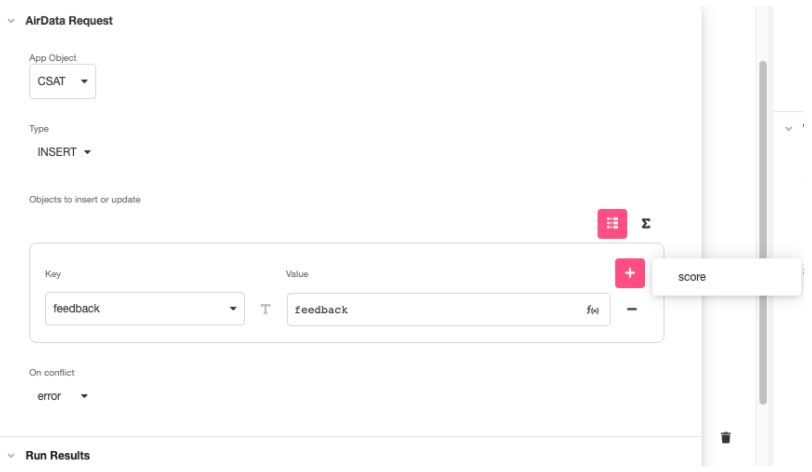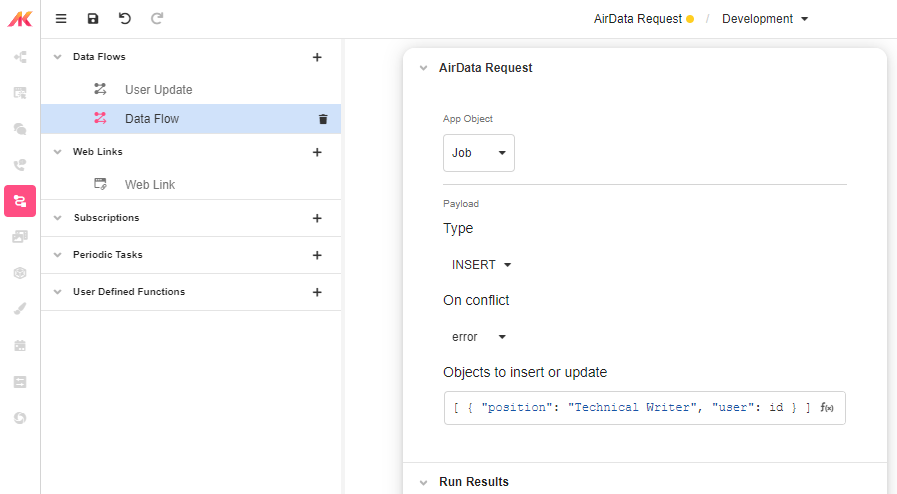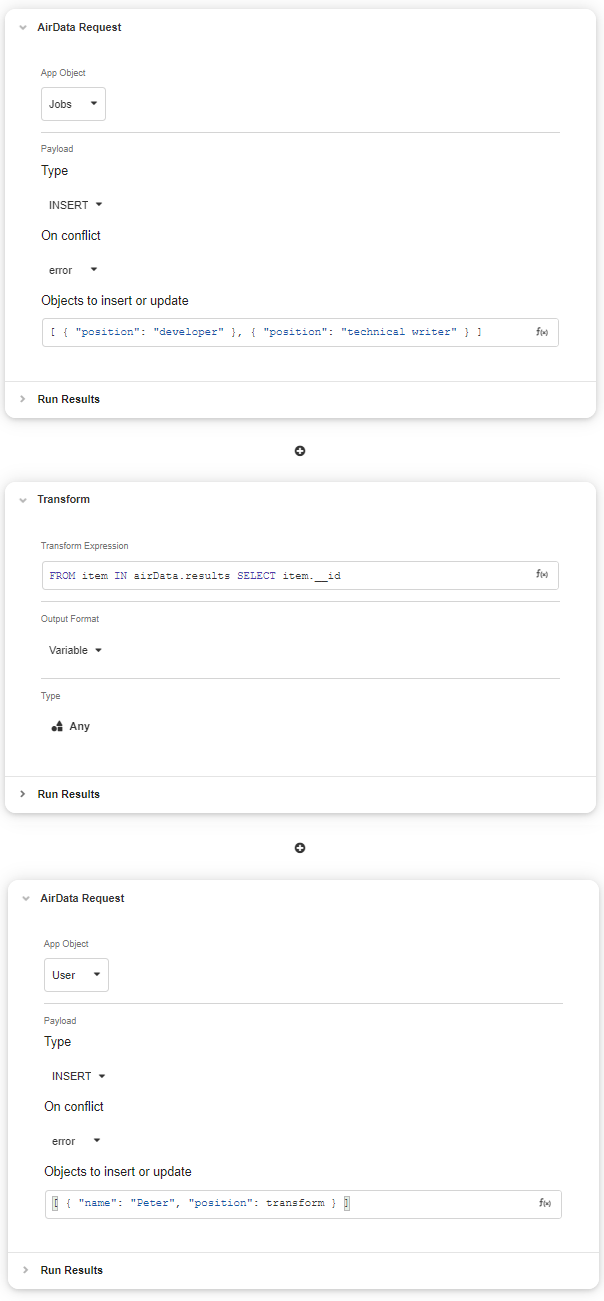The App Object as an array to be inserted/updated into AirData.

Insert Properties
Objects to insert or update
Expects type text.
The Key-Value pairs for the app object. The Key refers to the app object property and the Value refers to the value to be passed.
On conflict
Specifies an action that happens when there is a constraint set on the AirData App Object:
Error: if the object inserted doesn’t meet the criteria of the constraint and this is set to 'error', when run, it will result in an error.
Existing: if the object inserted does not meet the criteria of the constraint and this is set to 'existing', when run, the data operation will run as successful but it won’t insert any rows.
There are three methods to pass data as an object.
Method 1:
Use the Visual Query Builder to construct your object. When the object editor icon is selected, click on the "+" icon to add the individual key-value pairs for the app object. The Key refers to the app object property and the Value refers to the value to be passed.

Method 2:
Create the app object as an input variable in the Data Flow and send the entire app object.

Method 3:
Construct the app object as a JSON payload, with each individual value with their own input variable.

Insert with Related App Objects
The App Object to be updated in AirData with the __id of the Related App Object.
Method 1:
Updating a record with the __id
To update an App Object with an app object as a property (Related App Object), construct the object so that the __id is the value to be paired with the app object as the key. In the example below user is the related app object.

Method 2:
Updating a record in a single Data Flow
- INSERT the new data in the App Object that will work as a child (Related App Object)
- Add a Transform Data Operation to get the id of the "child" App Object
- Pass the id variable of the Related App Object using an INSERT Payload Type in the "parent" App Object.
